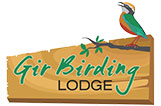PLACES OF INTEREST NEAR GIR
Veraval (36 km): A Fishing port and a dhow building yard. Veraval has historical buildings and ancient gates.
Somnath Temple (40km): An important pilgrimage destination of the Hindus. Famous for the jyotirlinga(holy abode of Lord Shiva). Somnath also has Lord Krishna’s cenotaph and bathing Ghats at TriveniTirth, a primitive Sun Temple, the famous AhilyaTemple, BakhlaTirth where Krishna is said to have met his end, and a cave temple.
For Birders, the Coastal areas of Somnath attract birds like dunlin, curlew sandpiper, black-headed, brown-headed, Pallas, yellow-legged and Beguelin’s gulls, gull-billed, Caspian, lesser crested, common, little, whiskered and river tern, ruff, ruddy turnstone, whimbrel, curlew, red-necked phalarope, etc.
Junagadh (63 km): Historically, Junagadh is one of the most fascinating cities in Gujarat.
- Ashoka’s Rock
- Buddist cave sites
- Mystic poet Narsinh’s monument
- Sakkarbagh zoological park – Captive breeding Asiatic
Girnar (60 km): located on the outskirts of Junagadh. The Jain temples with exquisite carvings are yet another attraction
Jetpur (90 km): Famous for block and screen printing workshops.
Diu Island (95 km): Diu Island was once ruled by the Portuguese and is now a Union Territory.
Other highlights of Diu
- Pauls Church
- Diu Museum
- Creeks of Diu- for Flamingoes, storks and
Gondal (123 km): A princely state known for its liberal rulers, Gondalhas an amazing heritage hotel a good place to stay in the luxurious comfort of its palatial rooms.
Other highlights of Gondal
- Vintage and Classic Car Collection of the Maharaja, the
- Maharaja’s Royal Rail Saloons, the
- BhuvaneshwariAyurvedic Pharmacy,
- Gaushala and Ashwapalak (breeding center for Gir cattle and Kathiawadi horses) Swaminarayan Temple.
- For birders, Gondal is interesting as it has large water bodies where white pelican, de missile and common crane, black-headed, black and glossy ibises, comb duck, spot-billed duck, spoonbill, and other birds gather in large numbers.
- The royal family’s grasslands are good for prints, larks, quails, francolins, and other birds. Lesser florican in most years breeds at these grasslands in August and harriers visit in winter. Ibises and waders breed in Gondal.
Jamnagar (151 km): The princely city of Jamnagar is dominated by its many palaces. Known for its tie-and-dye (bandhani) fabrics and its temples, Jamnagar also has a bird-rich lake where more than 75 species of birds have been listed.
Jamnagar is also the headquarters of the Gulf of Kutch Marine National Park and Wildlife Reserve, which shelters 42 islands fringed by coral reefs and mangroves. These islands and coastal areas are excellent for birding attracting large wintering flocks of crab-plover, Kentish plover, ruddy turnstone, whimbrel, curlew, track and curlew sandpiper, Temminck’s stint, and other waders. Many birds breed along the Gulf of Kutch and at the islands including herons, darters, cormorants, and terns. During low tide, the coral reefs can be sightseen to see octopus, sea hare and other mollusk, echinoderms like starfish, brittle star and sea urchin, sea cucumber, sea slug, many species of crabs and other crustaceans, segmented and unsegmented worms (including endemics), sea anemone, sea fans, and other marine life.
Khijadiya Bird Sanctuary near Jamnagar is also a good birding site. Indian skimmer is often seen in winter and the first breeding site of great-crested grebe south of the Himalaya was recorded here. Black-necked stork, glossy ibis, and other birds breed at Khijadiya and large flocks of ducks can be seen in winter.
The salt-works near Jamnagar are good for greater and lesser flamingo, great white pelican, and painted stork. Jamnagar is also the base to visit Ranjitsagar, Sasoi Dam, Sinhan Dam, and Khambaliya Dam, all four reservoirs are good for birding.
Rajkot (164 km): The bustling city of Rajkot has the Watson Museum, Gandhiji’s childhood home, Rashtriya Shala working to revive rare weaves and handicrafts, and public schools. The lakes around the city are good for waterfowl.
Porbandar (187 km): The birthplace of Mahatma Gandhi, Porbandar was the capital of an important princely state and has many historic buildings.
The creeks of Porbandar attract large flocks of flamingos, waders, and wagtails. Remarkable flocks of wintering cranes can be seen at dams and wetlands near Porbandar. Porbandar also has a lake that has been officially notified of a bird sanctuary. It is an excellent area for gulls and terns and one of the best places in Gujarat for great crested tern in winter.
Off the Sasan – Porbandar Road is the Barda Wildlife Sanctuary which is also good for birding and reptiles.
Dwarka (225 km): One of the Char-Dham yatra (four holy abodes) and one of the seven holiest cities of Hinduism, Dwarka has an important Krishna Temple, an attractive 12th-13th-century Rukmani Temple, Sankracharya’s Math, and the NageshwarJyotirlinga.
Located on the coast, Dwarka is also good for birding and green sea turtles are possible sightings on the beaches. Dolphins can be seen at Okha nearby especially during the ferry crossing to Bet Dwarka.
Gir Packages







